By Carlo Platella
“It's a profoundly different machine.” This is how technical director James Key defines the C44, a car that, if you look at it carefully, it is easy to understand why. Once again the presentation is characterized by digital renderings, with a physical model present in the studio whose aerodynamic surfaces appear simplified and in some cases dated. It matters little, however, because the real news is the profoundly renewed mechanical and chassis setup, which places the Sauber of early 2024 as the starting platform for a development that promises to be aggressive.
Switching to pull-rod
One of the notable innovations on the C44 concerns the front suspension. There will be time to comment on the exact arrangement of the triangles, for which it will be best to wait for the car's track debut. Rather, the main interest is in the transition from the push-rod to the pull-rod scheme, with the rod that activates the spring-shock absorber group now located in the lower part of the chassis. Considering the geometries in play, a pull-rod suspension is more critical from a mechanical point of view, putting more stress on the rod, but has advantages from an aerodynamic point of view. James Key explains: “From a mechanical point of view it is a compromise. A mechanical engineer would never draw it like that. It's a pull-rod, but not a nice way to activate the internal springs. If we did it it's for aerodynamics. With this generation of Formula 1, the suspension is an aerodynamic device rather than a simple support for the wheels.”
The interview given by James Key to FormulaPassion in 2022 is relevant again, when the then McLaren technical director explained the aerodynamic importance of suspensions with the current regulations: “Last year [nel 2021, ndr] there were bargeboards, turning vanes and other complex aerodynamic appendages in the center of the car, which could be exploited in the design phase to influence the flow from the front wing towards the remaining part of the car, in particular towards the bottom. Now suddenly we have none of this anymore, so the front suspension plays a much bigger role in the aerodynamic influence and the same goes for the bodywork”. At the time James Key directed the McLaren technical department towards a pull-rod scheme at the front, considered advantageous from an aerodynamic point of view, idea shared by Red Bullnow re-proposing it in the guise of DT Sauber.
Car body
The flat-bellied bodywork of the last two seasons returns to the C44, however brought to a new level of refinement. “The bodywork interacts closely with the bottomwhich generates most of the load,” explains Key. The channeling of air under the belly is now more progressive, starting from a greater height thanks to the squeezing of the lateral air intakes upwards (1). All this, in addition to increasing the energy channeled along the lower part of the side in the direction of the gearbox, also helps to increase the local pressure on the sides of the passenger compartment, which can be used as a shield against external turbulence.
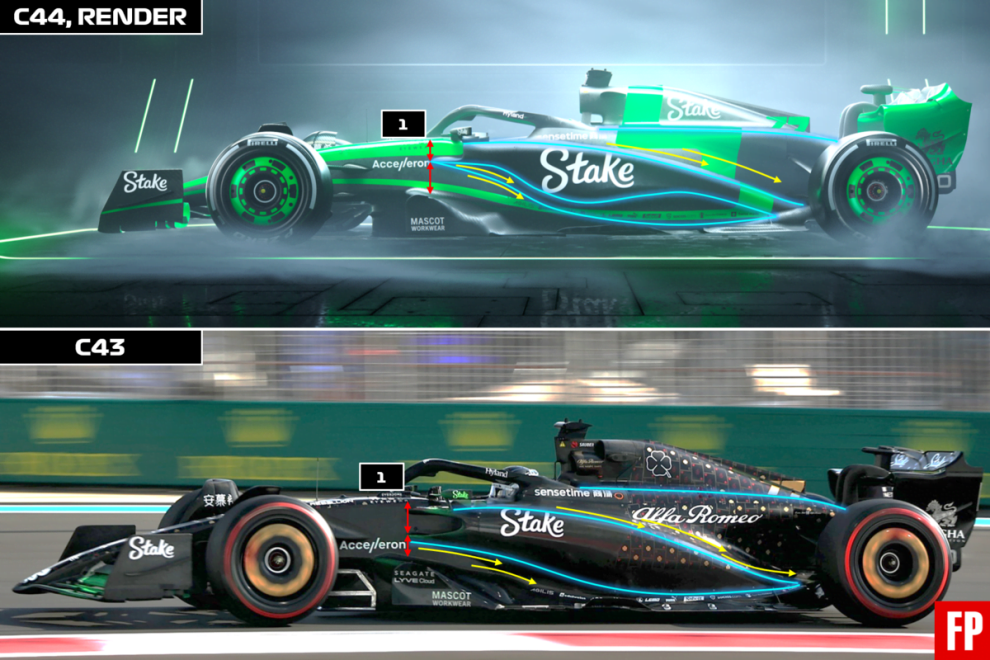
As mentioned, the side radiator air intakes follow the trend seen on the grid over the last two years, becoming increasingly thinner and extending the length of the lower lip. What increases is what is called in jargon aspect ratioi.e. the ratio between the width and height of the opening.
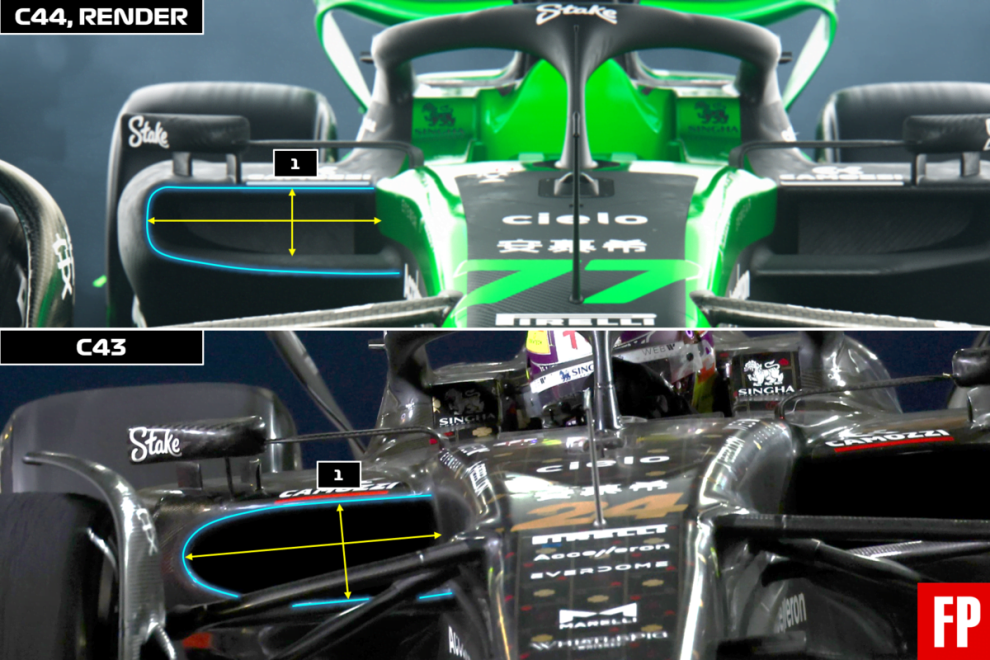
Returning to the sides, these are much more sculpted than the C43. Increase the undercut, i.e. the hollow under the belly to collect the flows along the lower contour. A small channel (2) has been created right in the lower part, above which the side seems almost suspended. However, James Key promises updates in this area already for the inaugural race: “Compared to last year, the bodywork is more three-dimensional and interacts differently with the floor. It is an area that evolves quickly and at the first race we will see different shapes”.
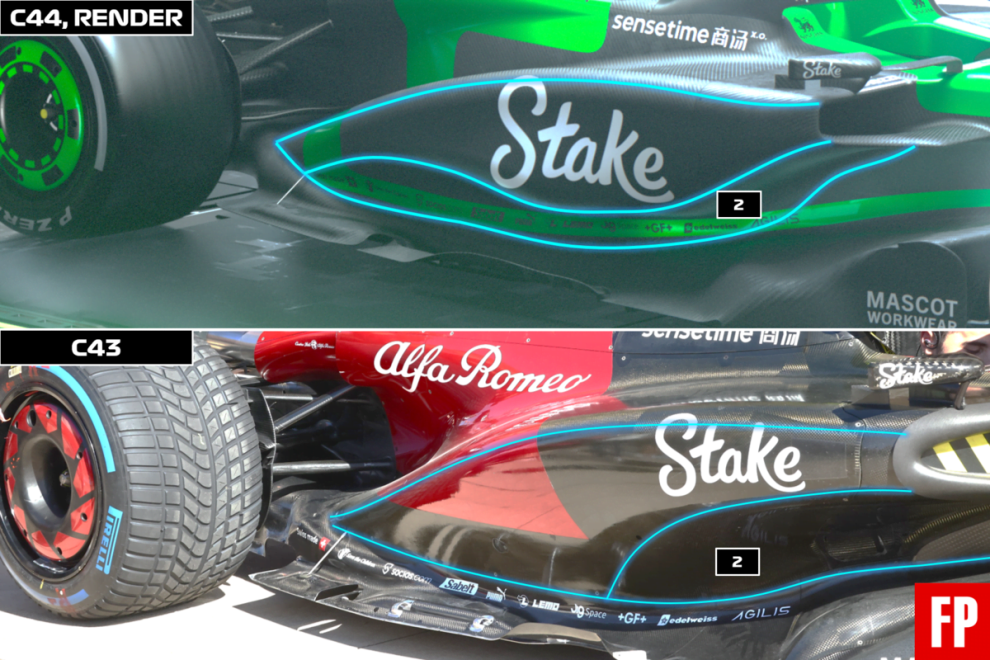
The internal packaging
The slimming of the sides is in some ways surprising if we consider the other changes appreciated on the C44. In fact, the thinning of the side air intakes certainly does not facilitate internal cooling, which is why the changes to the bodywork reveal the great development carried out under the skin. “A great job was done by the team to free these volumes”confirms Key.
“We have done a huge amount of packaging and mechanical design work to enable more aggressive development. If we removed the hood, we would see beautiful packagingwhich allowed us to design an aggressive bodywork.” A notable mechanical development has made it possible to reduce the dimensions of the internal electronic components, also reviewing the positioning of the radiators between the central position and the internal volumes on the sides. Thanks to the risks taken on the packaging and mechanical front, the C44 can boast a new aerodynamic look: “The architecture of the car has changed in a way that complements the aerodynamics,” sums up Key.
New breathing for the Ferrari engine
Now that all the components are compacted around the Ferrari engine, it will be interesting to monitor its performance. The compromise between aerodynamic efficiency and cooling, in fact, is crucial for the performance of the engine, an aspect which has significantly penalized Alpine's performance. It is therefore important to underline the changes made to the dynamic air intake above the rider, which goes from double to single intake channel for the engine, a further sign of how much the Ferrari unit will breathe differently compared to the past.
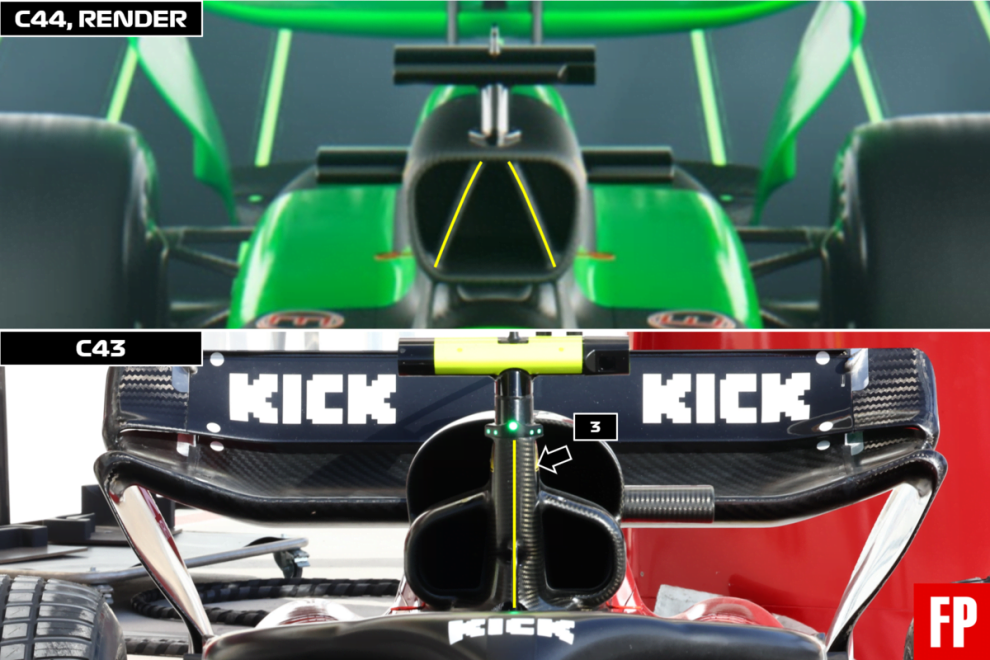
In the same area the evolution of anti-tipping structure, which abandons the blade shape in favor of a more traditional triangular geometry (3). The old design was advantageous from a weight point of view, but with the tightening of safety regulations it has become increasingly critical, as well as inappropriate with the new aerodynamic vision.
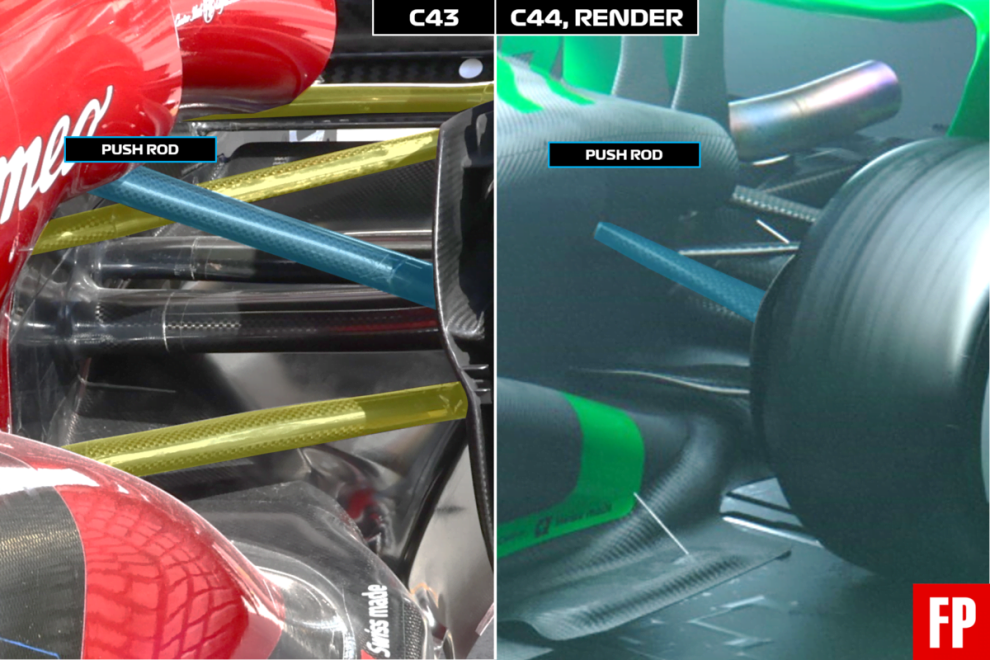
At the rear it is proposed again the push-rod scheme for the rear suspension, also confirmed by the car's technical data sheet. Sauber thus becomes the third team after Red Bull and McLaren to use pull-rod kinematics on the front and struts for the rear. While waiting to be able to comment on the aerodynamic details, the C44 presents itself as an important revolution compared to its progenitors. At Sauber it will take time to get to know the new car, inviting us to wait at least the first quarter of the season before being able to express our opinion on the success or otherwise of the project.
#Sauber #C44 #analysis #revolution #Ferrari #engine